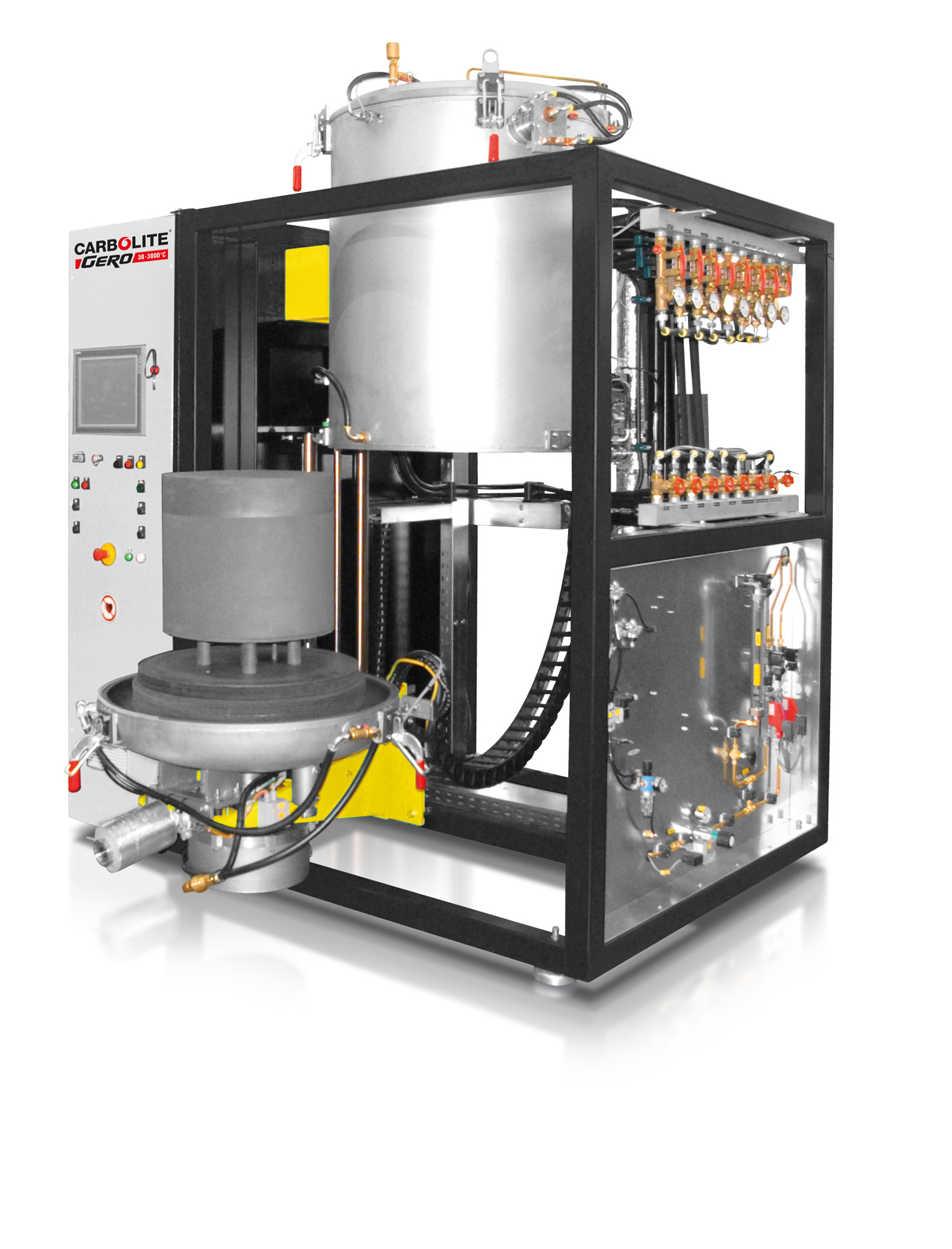Due to their properties, C/C – SiC composites are therefore the material of choice in highly oxidizing atmospheres and very high temperatures. The material is used, for example, in jet vanes for missile rockets, brake pads for sport cars, bullet proof vests and nose caps for spacecrafts (reentry into earth atmosphere).
One major manufacturing process of these compounds is siliconization, more accurately the liquid silicon infiltration (LSI) of porous C/C. Compared to other processes like chemical vapor infiltration, LSI is a cost efficient and quick manufacturing process, which may be carried out in Carbolite Gero's HTBL GR vacuum furnace.
During heat treatment in the furnace, silicon is melted on top of the porous C/C material and diffuses into the pores of the material. This results in the reaction of the carbon matrix with silicon, which forms SiC and yields a dense material with C/C segments separated from each other by SiC.
The all-around accessibility of the HTBL furnace is very advantageous for this application. The automatic software control makes unattended operation possible and ensures a proper data logging. |

HTBL 80 GR/22-1G: Spodem plněná silikonizační pec s využitelným objemem 80 l s výhřevností až do 2200°C. Spodek je rozšířen pro plný přístup.
|
|
A PLANT FOR PYROLYSIS AND SILICONIZATION BY CARBOLITE GERO
A plant to carry out both, Pyrolysis and Siliconization built by Carbolite Gero is shown on the right. The first unit is used for the pyrolysis process of carbon based material. This pyrolysis can be carried out in partial pressure mode. This means the total pressure inside the furnace is below atmospheric pressure. At the same time, inert gas is purged into the furnace.
The typical debinding temperature is between 400°C and 600°C. In this temperature range, the binder evaporates by the combination of temperature and underpressure. A defined path towards the heated gas outlet sucks the binder out of the furnace into the vacuum pump. Hence, the vacuum pump is a special fresh oil pump, capable of pumping the binder. Finally, the binder is combusted in an active afterburner, driven by compressed air and propane gas.
The second HTBL type furnace is used for Siliconization itself. The melting point of the liquid silicon is 1414°C. The furnace is designed for operation up to 2000°C. Some pictures of the carbon material before and after siliconization carried out during the factory acceptance test are shown below.
The HTBL for siliconization is equipped with a pre vacuum pumping unit with a roots pump on top. The furnace is three zone heated for an improved temperature distribution inside the usable space.
Both furnaces were successfully installed in the production area of our customer.
|

Dvě pece HTBL 80 GR/22-1G během instalace u zákazníka. Jedna pec HTBL se používá pro proces pyrolýzy. Druhá pec HTBL se používá pro proces silikonizace.

Základní čerpací jednotka se používá pro snížení až na jemný rozsah vakua. Speciální olejové čerpadlo se používá k procesu odstraňování pojiva v částečném tlaku. Čerpací jednotka je namontována na samostatném nosiči.
|